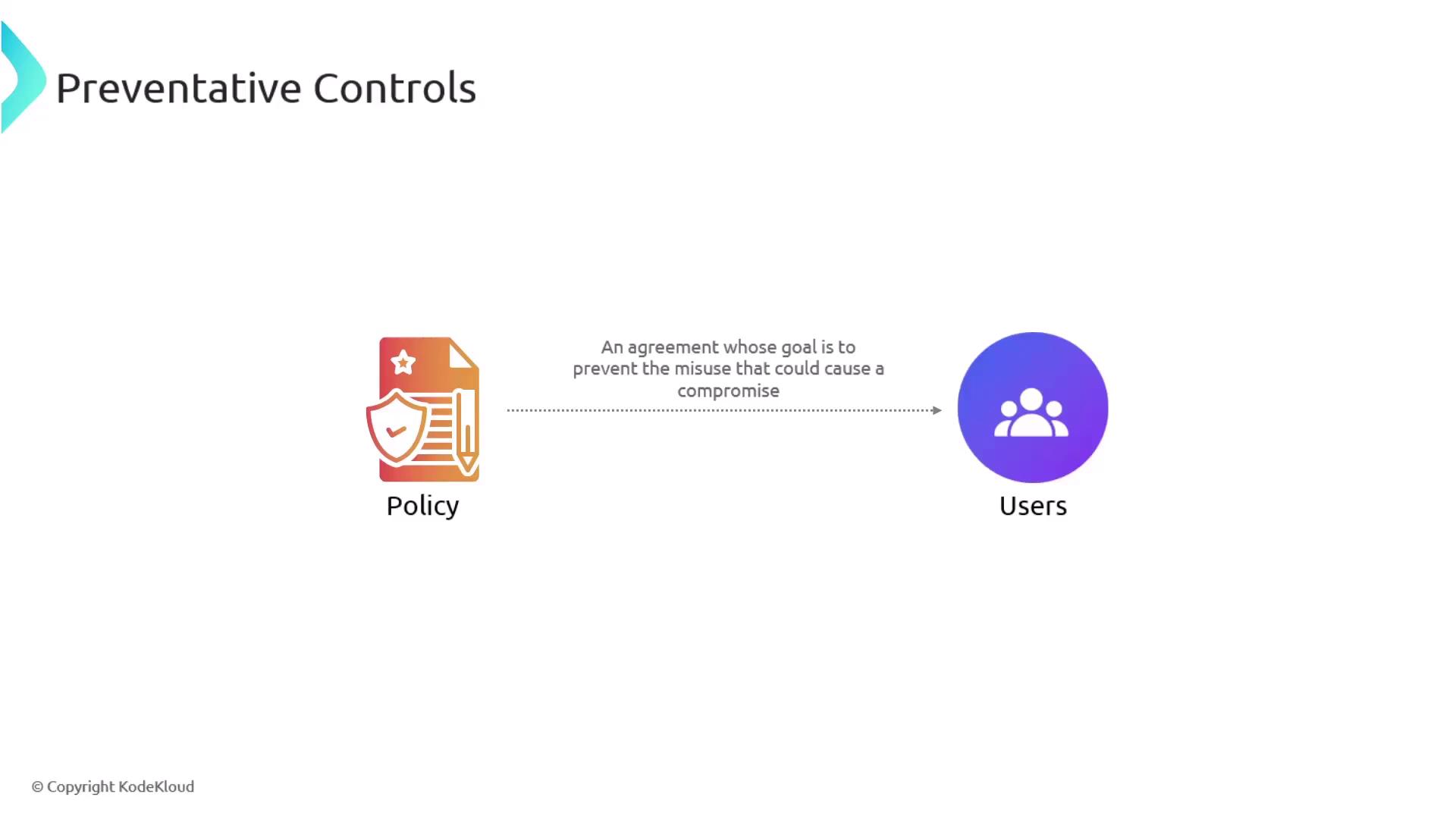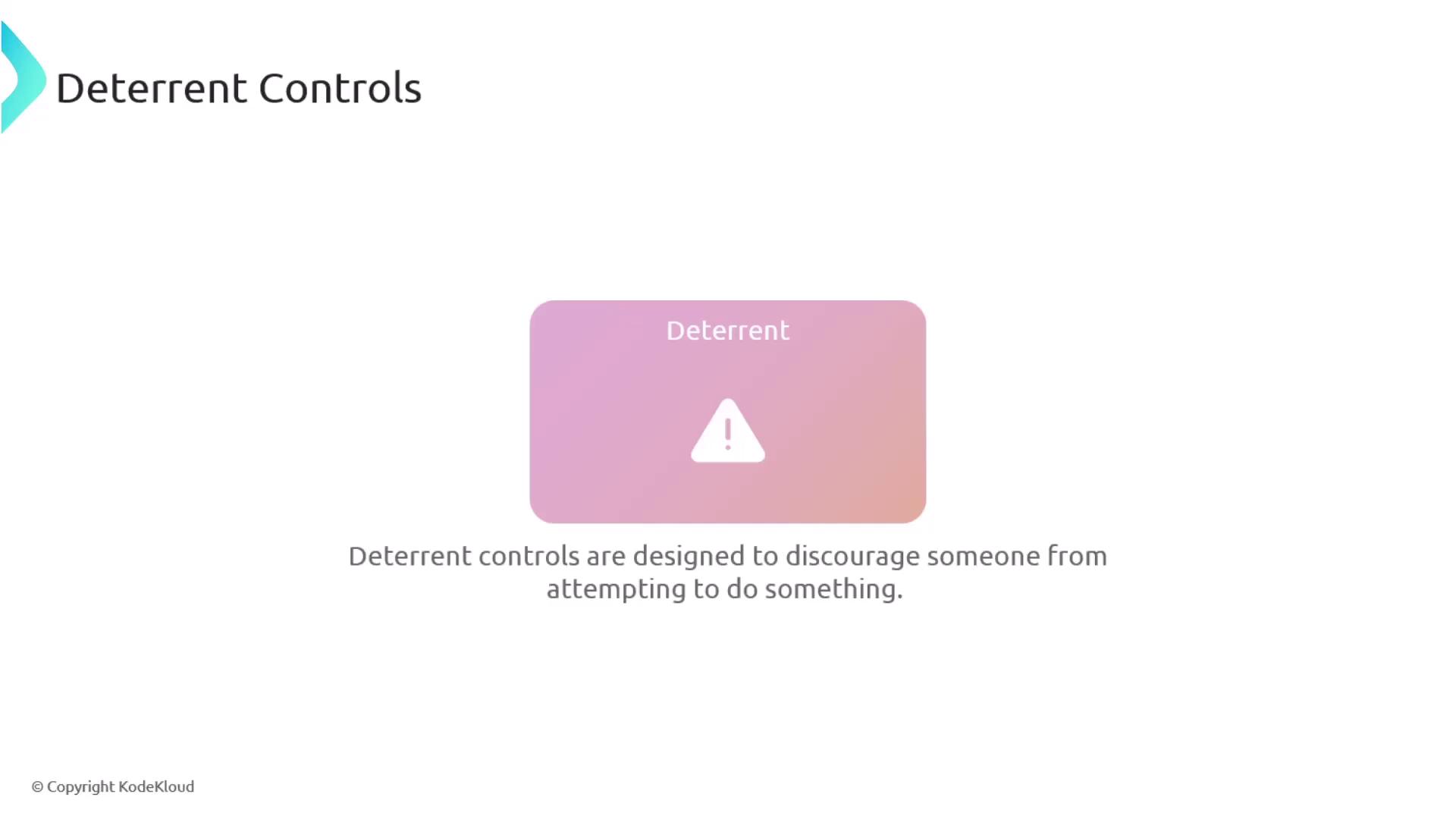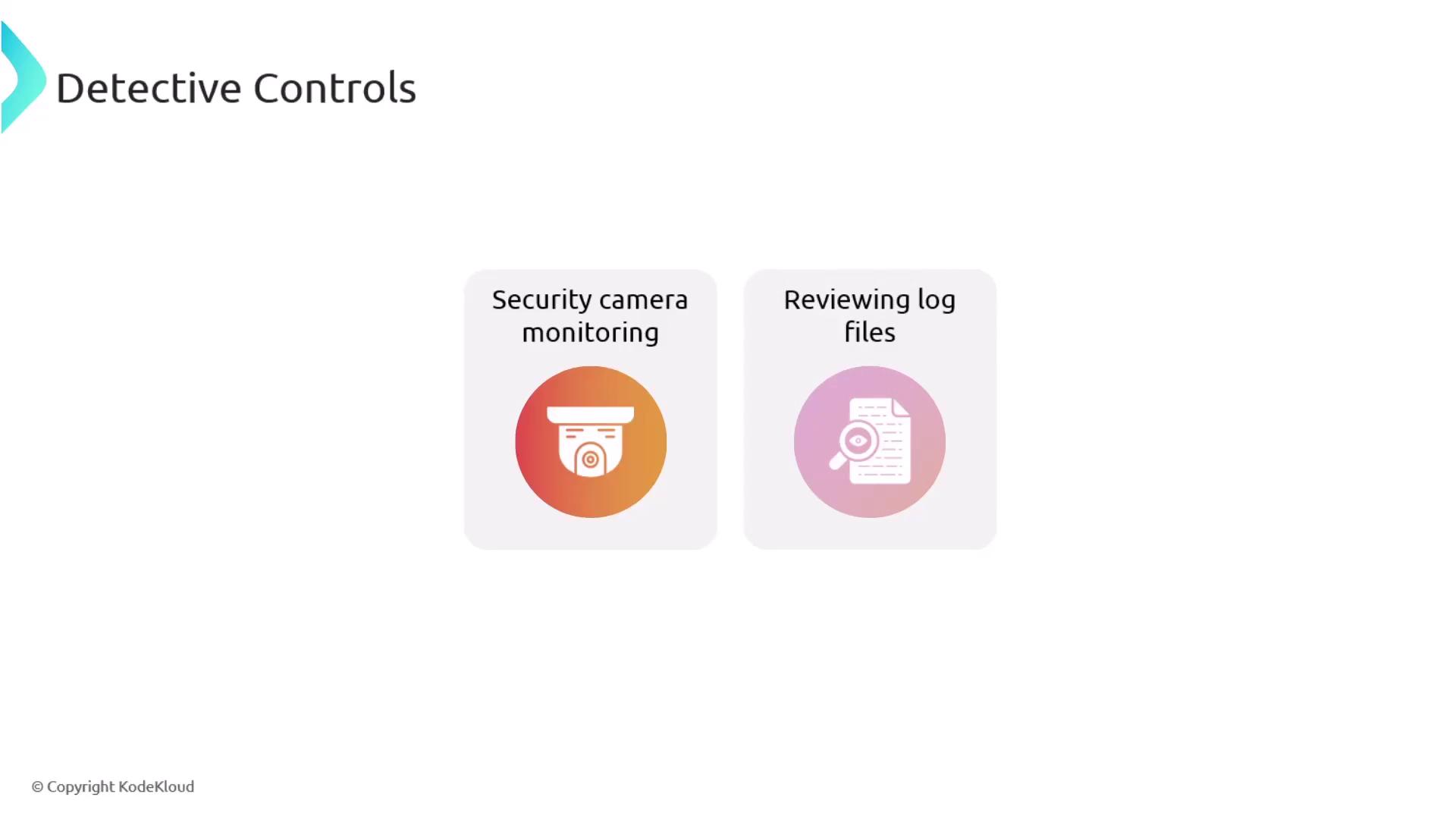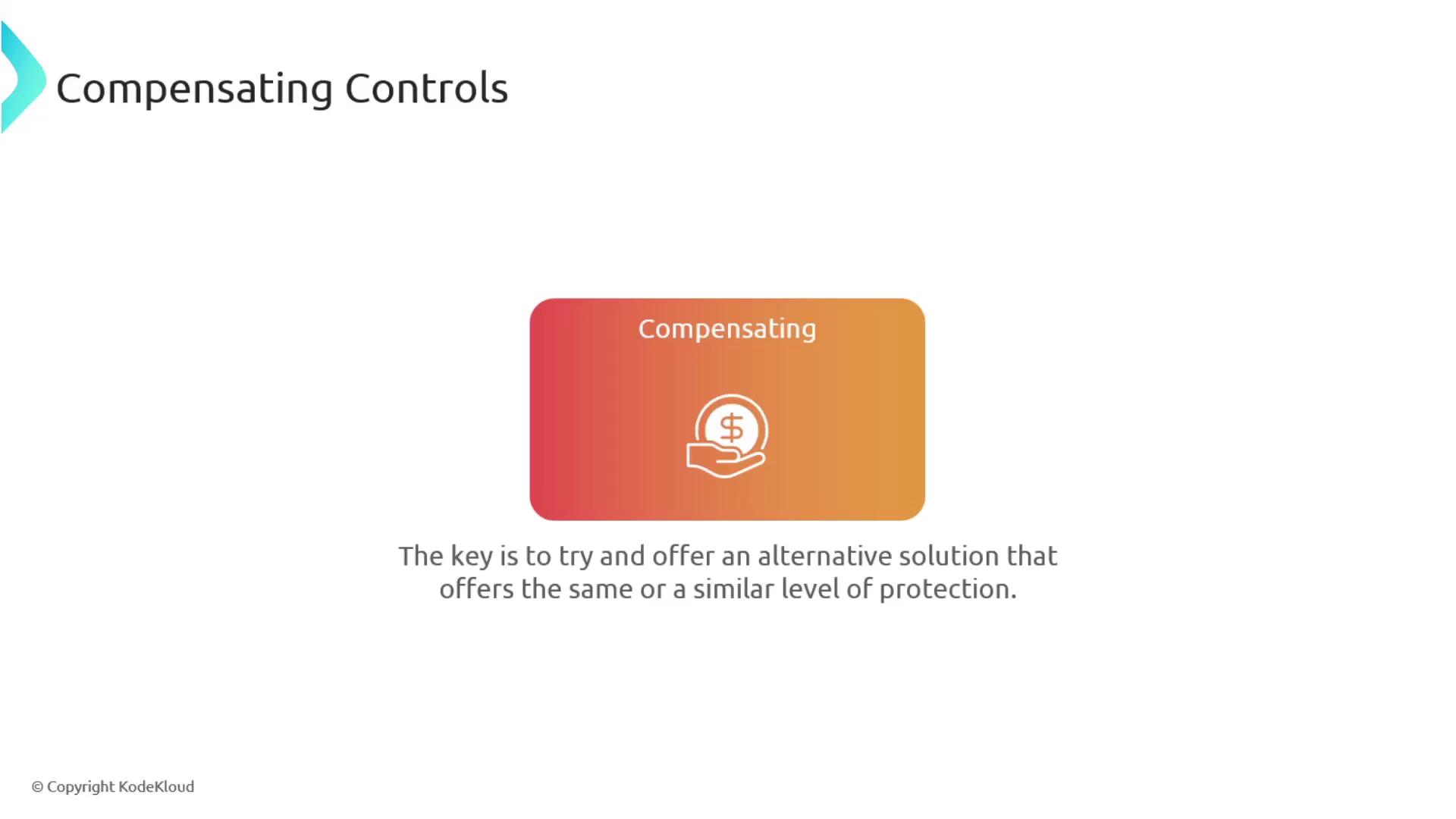CompTIA Security+ Certification
Controls and Security Concepts
Types of Controls
Understanding various security control types is essential for building a robust cybersecurity strategy. In addition to control categories, security controls are also defined by their function: preventative, deterrent, detective, corrective, and compensating. Each plays a unique role in safeguarding an organization against threats.
Preventative Controls
Preventative controls are proactive measures designed to block or reduce an attacker's methods before an incident occurs. An acceptable use policy is a typical example, as it sets clear guidelines on permitted and prohibited actions, thereby preventing misuse before any compromise.
![]()

Deterrent Controls
Deterrent controls are designed to discourage unauthorized actions rather than physically blocking them. A common deterrent is a warning sign, which aims to dissuade individuals from engaging in undesirable or illegal behavior.

Detective Controls
Detective controls are responsible for monitoring and identifying suspicious activities or breaches as they occur, without directly preventing them. Systems that provide real-time security monitoring and conduct regular log file reviews serve as prime examples of detective controls. These measures enable prompt detection and response to security incidents.


Corrective Controls
Corrective controls come into play after a security breach to mitigate or eliminate the impact of an attack. For instance, after a ransomware attack has resulted in data loss, restoring data from backups is a corrective measure. These controls are vital for an organization's recovery process and help restore normal operations swiftly.

Compensating Controls
Compensating controls are alternative measures that provide a similar level of protection when implementing standard controls is not feasible. For example, if a legacy system cannot be upgraded, an organization might disable unnecessary services, restrict network access, or introduce a firewall to monitor and block non-essential traffic. For Linux-based legacy systems, implementing a host-based firewall further enhances security.


Note
Integrating these control types into a layered defense strategy ensures a comprehensive approach to cybersecurity. Preventative controls strive to stop an attack before it begins, while deterrent, detective, corrective, and compensating controls provide additional layers of security to react, monitor, and recover from threats.
Watch Video
Watch video content